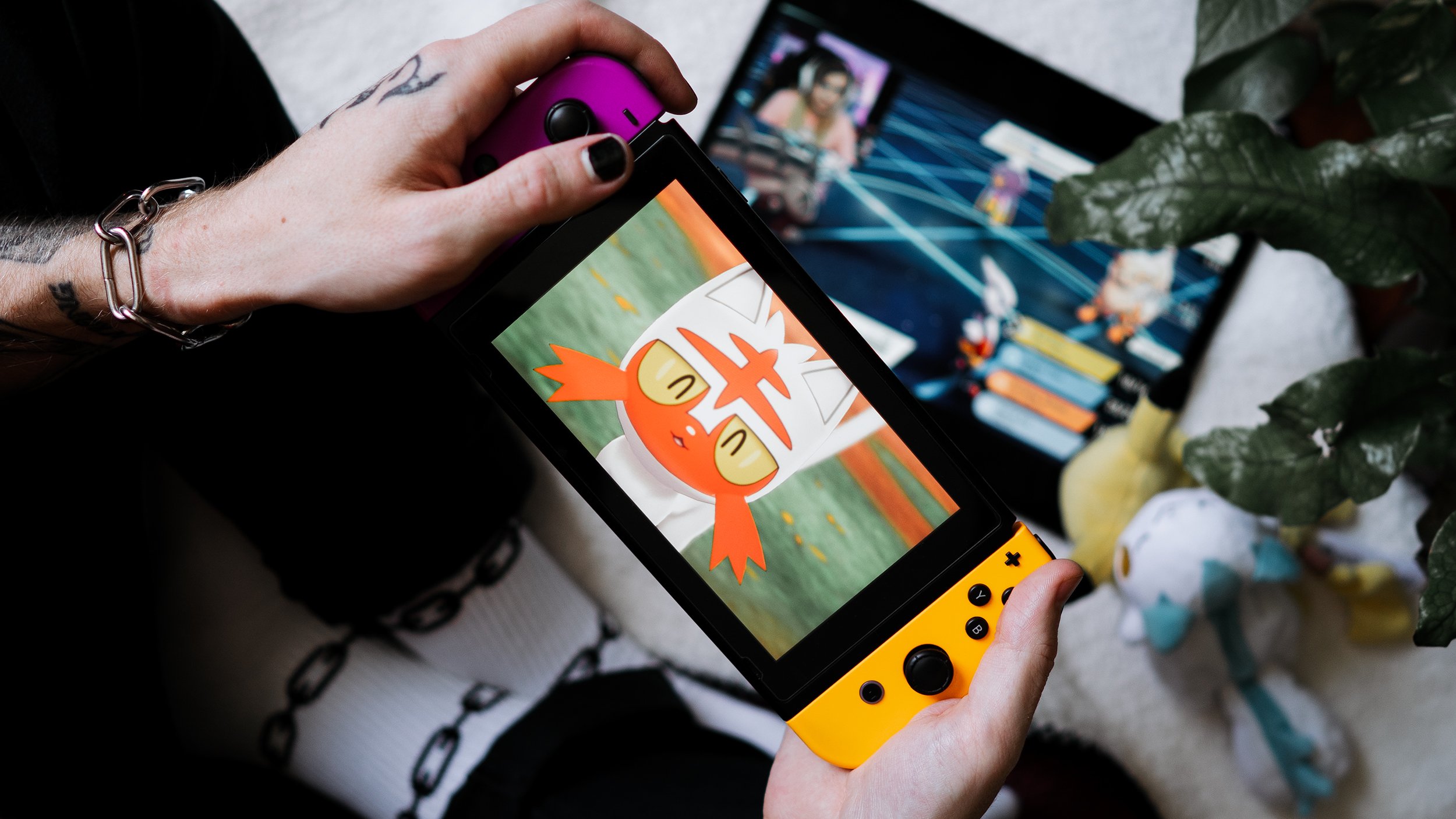
How to Win (Sometimes) With Your Favorites
6min 58sec read
A guide to building a team around your favorite Pokémon.
Written by Wolfe Glick
Teambuilding / Putting It All Together
A common theme so far is that there’s no right or wrong way to play Pokémon competitively. Even at the highest level, competitors are motivated by a variety of different factors. There are players present throughout all levels of competitive Pokémon (to varying degrees) that are motivated by something else - instead of using commonly used Pokémon, they prefer winning in a way that feels “right” to them. Sometimes, these players are even willing to use Pokémon perceived as “weaker” in pursuit of this goal. Most often, this takes the form of “winning with your favorites”, which is a term used in conjunction with a player who builds their team around a Pokémon not necessarily because of what it offers competitively but instead due to some kind of personal attachment.
In this article, I’ll share some of my tools that help me identify the strengths of any Pokémon and how I build a team around them. I should be upfront, first: starting a team by simply choosing a Pokémon you like, especially a Pokémon that doesn’t have established strength, is more difficult than other starting points, and does not always (or even often!) yield results. When I build teams competitively, I always start with goals for my team, and then find Pokémon to accomplish them. When you start with a Pokémon because you like it, you’re searching for a problem to solve, which is putting the cart before the horse.
That being said, it’s a lot of fun to battle with Pokémon that feel unique and not every team you build has to be intended for top tournament play.
Figure out your Pokemon’s Strengths
In most cases, players who are most interested in winning with their favorites will have a Pokémon in mind which they’d like to build around. The first thing to do when building around (or “forcing”) a specific Pokémon is to look at what it does well, which can give you some idea of strategies you can employ. Ideally, your Pokémon will have some strength or goal that sets it apart from other Pokémon– the less tools your Pokémon has access to, the more challenging your task will be. If you decide to build around Chimecho, for example, you may struggle a bit, but if your favorite Pokémon is Incineroar I have good news for you.
When you choose to build around a specific Pokémon, you have the advantage of having a starting point based on that Pokémon’s intrinsic strengths and weaknesses. If you’ve already identified HOW you want to use your Pokémon, that will provide even more guidance, but even without a central strategy or moveset selected you can still begin building. Oftentimes I’ll choose Pokémon for my team without deciding on the moves or items, and once I have an outline I’ll go back and begin filling in the structure of the team.
How do you identify your Pokémon’s strengths? There’s a couple places to look.
Which of your Pokémon’s base stats are the highest?
Does the Pokémon have any unique moves?
Is there something this Pokémon does better than any other Pokémon can?
Does the Pokémon have any tools to manipulate Speed?
Can the Pokémon support its partners in a unique or meaningful way?
These starting points should get you thinking about what your Pokémon can do well, which leads us into our next step.
Identify your Pokémon’s Place in the Format
Now that you’ve identified a Pokémon that you want to build around and some things it can do well, it’s time to look broader. You have a square peg, and now you need to go find a square hole. Start looking at which Pokémon (individually as well as combinations) are popular, and consider if your Pokémon can be used against any of them. If you aren’t sure what is popular, you can watch videos of other people playing or check out usage statistics.
Some things to consider when thinking about if your Pokémon is strong against other popular Pokémon include:
Does your Pokémon have a type advantage?
Will your Pokémon move first?
Does your Pokémon make your opponent's strategy more difficult to execute?
Does your Pokémon allow potential partners to be more annoying for your opponent?
Will your Pokémon be difficult to remove while meaningfully contributing to the battle?
Does your Pokémon disrupt your opponents strategies in a meaningful way?
Write these answers down so you have them for later. Once you have an idea of which popular Pokémon your pick will match up well against, it’s time to think about the Pokémon you’re weak against.
Identify your Pokémon ’s Weaknesses
You have some things your Pokémon does well now - great! However, every Pokémon has weaknesses and it’s time to think about yours. When you were considering which Pokémon you had an advantage against earlier, did you notice any where your matchup was unfavorable? Are there any Pokémon you really don’t want to use your favorite against, or that you need to remove in order to win with your favorite?
This is a two-step process - first, identify what the weaknesses are of the Pokémon you chose. Then, start to consider how to deal with them. “Countering” Pokémon is actually really difficult in VGC, so it’s important to have a number of answers for threats. Some helpful tools to include are:
Add Pokémon that can switch in when you want your favorite to leave the field (good defensive type synergy)
Add Pokémon that offensively pressure the Pokémon your favorite is weak against
Add Pokémon that enable your favorite to have a more positive matchup against its checks
Add Pokémon you can use to handle your favorite’s threats while keeping it safe off the field.
Again, write what you brainstorm down. One thing that helps me personally during this step is to look for broad weaknesses of my chosen Pokémon, such as being generally weak to Steel types or to Pokémon that are faster than base 110 Speed. With our weaknesses outlined, we’re ready for the last step of our process.
Add Support and Finish Your Team
Once you have a starting point, you’re going to need to build the rest of the team. That process will be extremely similar to the process that we describe in this article; you’ll fill out the rest of a core that works with your favorite Pokémon, you’ll think about what your core is strong and weak against, and then you’ll finish off your team. The only difference here is that we’re totally focused on making this Pokémon the star of the team, and we’ll be orienting most of our other choices with its strengths and weaknesses– as we identified in the above sections– in mind.
It is tempting at this point to focus on the usage statistics of potential partner Pokémon and overcompensate in either direction: you might say “I’m using a very uncommon Pokémon, so I’ll have to add some of the top usage Pokémon to make up for it”, or say “I want to go totally off the deep end and use a bunch of Pokémon no one’s heard of”. There’s nothing wrong with either thought process, but instead try to focus on your team’s goals and what you’ll need from the Pokémon that you’re adding later in the process.
Once your team is done, give it a shot on the ladder. It may take a couple of iterations of your team before you’re comfortable with how it plays and how its strengths and weaknesses play out in battle.
Wrapping Up
Pokémon is interesting, in large part, because of the creative choices that a player can make during the teambuilding stage. Some people enjoy teambuilding around their favorite Pokémon or around Pokémon that receive less attention from other players, perhaps because it allows them to express their creativity openly from the minute the battle begins, or because building such teams is a unique challenge. Teambuilding with these goals in mind is not all that different from teambuilding in the general case around any strategy or idea. However, it does require a certain honesty in your thought process: what are the strengths and limitations of your centerpiece Pokémon or strategy? For some players, the joy of winning with their favorites more than makes up for the difficulty of teambuilding in this style.

